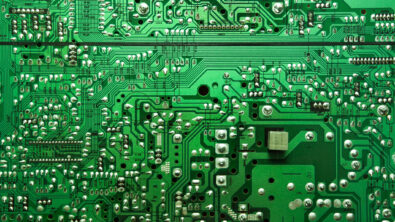Revolutionizing PCB design through automation: insights from John Medina

In PCB design, the integration of automation into your design approach isn’t just a convenience; it’s a necessity that enhances efficiency and productivity. In our latest podcast, seasoned industry professionals, John Medina and Steph Chavez, dive deep into the use of design automation in the PCB design process.
Who is John Medina?
John Medina, the owner of High Speed Design Services, boasts an extensive career spanning over 30 years in PCB and package design, with a strong focus on signal integrity. He has provided co-design and SI/PI services for esteemed commercial companies and defense contractors. John’s background encompasses advanced PCB and high-density package designs, coupled with delivering comprehensive PCB training. His career includes stints at major corporations like Apple, Northrop Grumman, Agilent, Cisco, and Intel, where he specialized in package flip chip design. Notably, he contributed significantly to Mentor Graphics as a Field Application Engineer and holds a patent for Bump Compensation Methodology, which directly correlates to his proficiency in automation within the realm of PCB and package design.
Embracing strategic automation
Steph Chavez begins the interview by acknowledging John’s extensive background in PCB design and recognizing the pivotal role design automation plays in streamlining workflows. John concurs, underscoring the inseparable link between his design methodology and automation. He emphasizes a fundamental principle: automating repetitive tasks to enhance efficiency and productivity. John’s approach revolves around a simple rule of thumb—if a task requires manual repetition more than three times, it merits automation to save time and boost productivity.
From scripting to streamlining workflows
John recalls an era when generating manufacturing outputs demanded a series of intricate steps. Recognizing the inefficiencies in this manual process, he started scripting tools to expedite post-processing tasks. This move underscored the transformative power of automation long before it became a standard feature in eCAD tools. John’s proactive approach in embracing automation not only streamlined his workflow but also set a precedent for efficient design practices.
Harnessing automation’s potential
Reflecting on his consulting days, Steph recalls a pivotal moment when stringent deadlines forced him to explore automation tools like auto-router, which he initially met with reluctance due to fears of losing control. However, the successful outcomes and time-saving potential of automation he saw during this crucial period became a catalyst for his wholehearted adoption of design automation. It signified a shift from apprehension to acknowledgment of automation’s capacity to expedite and streamline PCB design processes.
Automation in complex design scenarios
Both experts unanimously emphasize the indispensability of automation in tackling today’s intricate designs. John illustrates this through an example involving high pin count BGAs, where manual routing would entail tedious and time-consuming processes. Automation tools such as sketch planners, trunk routers, and plow routing offer strategic planning, visualization, and rapid execution, transforming complex designs into manageable tasks.
Practical applications
John elaborates on practical applications of automation functions within his projects, citing examples of sketch planners aiding in pre-routing visualization, trunk routers facilitating strategic BGA fan-out, and plow routing enabling the simultaneous routing of bus architectures. Moreover, leveraging physical reuse sub-circuits combined with complex vias streamlines intricate routing processes, marking a significant leap in design efficiency.
Automation as a design imperative
As the conversation draws to a close, both experts unanimously agree on the indispensable nature of automation in modern PCB design. They emphasize that as the industry progresses, automation isn’t just an option; it’s a strategic imperative for navigating the complexities of modern design challenges. Automation stands out as a true enabler of efficiency, productivity, and strategic planning. Through the experiences and insights shared by industry veterans like John Medina and Steph Chavez, it becomes evident that embracing automation isn’t just about saving time—it’s about unlocking new potentials and conquering design complexities with ease.
For more, listen to the full podcast: The power of PCB design automation!


